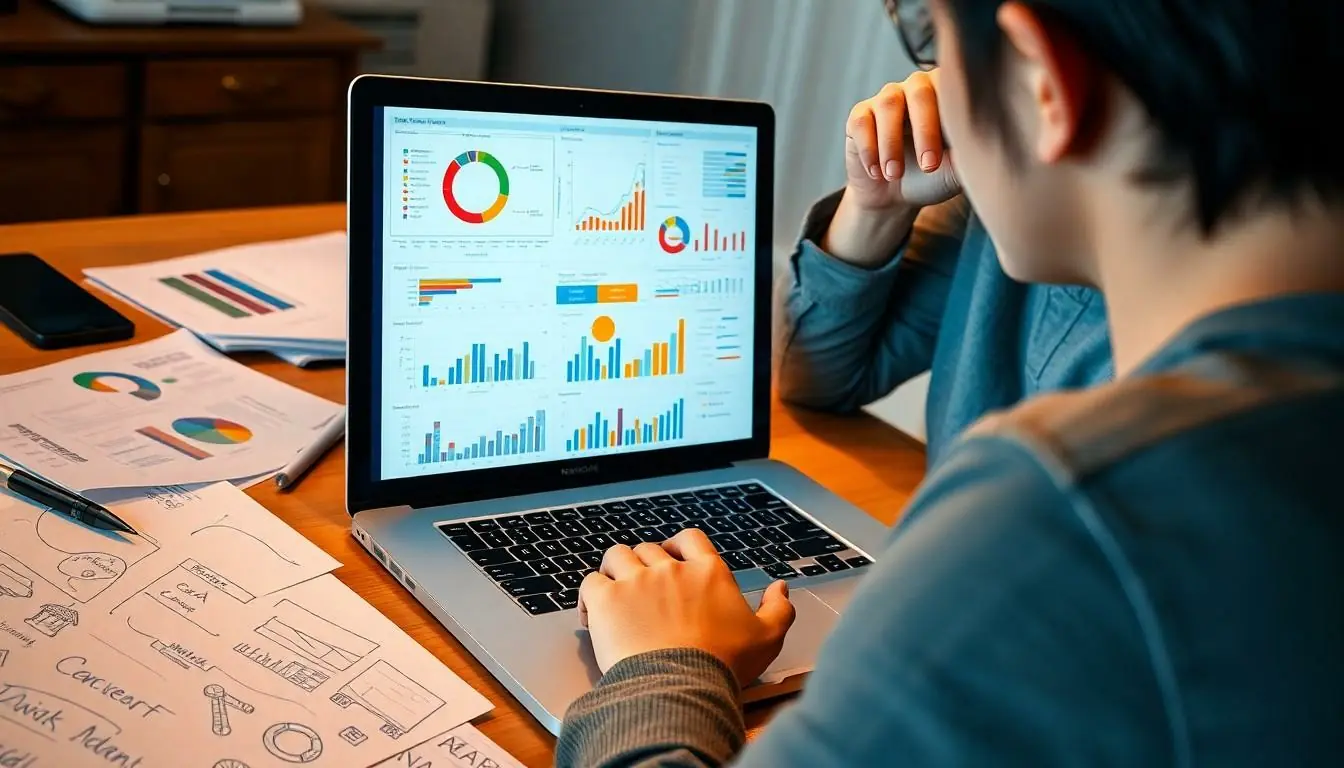Imagine chatting with a digital assistant that not only answers your questions but also visualizes your ideas in stunning graphs. Sounds like a sci-fi dream, right? Well, welcome to the age of AI, where tools like ChatGPT are stepping up their game. While it can whip up a storm of text, the question remains: can it actually create graphs?
Table of Contents
ToggleOverview of ChatGPT
ChatGPT represents a significant advancement in artificial intelligence, specifically in natural language processing. This AI model engages users through conversational interfaces, producing human-like responses based on input. Functioning on a large dataset, it generates coherent text while understanding context and intent, making it versatile for various applications.
Developers designed ChatGPT to serve numerous purposes, such as customer support, content creation, and tutoring. Its ability to comprehend and respond to queries enhances user interaction, providing real-time assistance. With continuous updates, ChatGPT evolves to incorporate user feedback and improve performance.
Despite its strengths in text generation, ChatGPT does not inherently create graphical representations like graphs or charts. Instead, it can describe data visualization methods or guide users on how to build graphs using compatible tools. This limitation highlights the distinction between text-based outputs and graphical content.
Users engage with ChatGPT for insights on data interpretation and visualization techniques. The AI excels in breaking down complex information, simplifying explanations for varied audiences. By providing step-by-step guidance, it aids users in understanding how to visualize data effectively, even if it doesn’t produce the graphical elements directly.
ChatGPT serves as a powerful language model focused on text interaction, yet its capacity for creating visual representations remains a feature outside its core functionality. Users benefit from its conversational ability while leveraging additional tools for graph creation and other visual data needs.
Capability of ChatGPT

ChatGPT showcases impressive capabilities, particularly in natural language processing and guiding users on topics like graph creation.
Natural Language Processing
Natural language processing serves as a foundation for ChatGPT’s functionalities. It understands context, enabling meaningful conversations with users. This understanding allows the AI to interpret intricate user requests effectively, transforming them into relevant information. Precision in communication marks its strength, as it generates responses that align closely with user inquiries. Users access detailed explanations on various subjects, enhancing their overall experience. The AI’s proficiency aids in breaking down complicated data visualization methods, facilitating easier comprehension for users.
Limitations in Graph Creation
Limitations exist when it comes to graph creation with ChatGPT. This AI does not create graphical representations directly. Instead, it offers guidance on using external tools for visualization. Users looking to develop graphs can rely on detailed instructions from ChatGPT. Clarity in conveying how to generate graphs using compatible software remains a notable feature. While the AI excels in textual descriptions, the creation of visual elements lies outside its core capabilities. This distinction highlights the importance of understanding ChatGPT’s role in assisting, rather than executing, graphic tasks.
Methods of Graph Creation
ChatGPT assists users in creating graphs by providing guidance rather than generating visual content directly. It simplifies the process of data visualization through clear instructions.
Text-Based Descriptions
Describing graph types and functions forms a core part of ChatGPT’s support. It outlines various graph styles, including bar charts and line graphs, providing context about when to use each type. Specific attributes like data sets and comparative analysis receive focus, enabling users to understand what kind of visualization fits their data best. Additionally, users gain insights into best practices for labeling axes and selecting colors, which enhances overall clarity.
Integrating with Other Tools
Connecting ChatGPT with external graphing software holds great potential for users. Many popular tools, such as Microsoft Excel and Google Sheets, offer functionality for graph creation. By receiving data and direction from ChatGPT, users can create graphs rapidly using these tools. Step-by-step directions guide users through importing data and customizing visuals, maximizing the opportunities for effective data presentation. This integration transforms ChatGPT into a valuable assistant in the visualization process.
Practical Applications
ChatGPT’s capabilities extend into practical applications, especially in data visualization and education. Its role as an assistant enhances user experiences across various contexts.
Data Visualization Assistance
ChatGPT provides valuable guidance for users creating graphs. Users find clear, step-by-step instructions that simplify the process of using software like Microsoft Excel and Google Sheets. It helps identify the right graph types based on data, from bar charts to pie charts. Best practices for color selection and labeling also enhance the visual clarity. Users gain insights on translating datasets into effective graphical representations, ensuring their messages are communicated effectively.
Educational Use Cases
In educational settings, ChatGPT serves as an effective tutor, aiding students in understanding data representation. Students receive explanations tailored to their inquiries, whether they’re learning about statistical concepts or practical applications of graphs. The AI encourages critical thinking by posing questions related to data interpretation. Additionally, it assists educators in designing lesson plans that incorporate data visualization, making complex topics accessible. Resources are developed collaboratively, facilitating students’ engagement with materials that require visual comprehension.
ChatGPT stands out as a powerful tool for enhancing user experience through its conversational capabilities and guidance in data visualization. While it doesn’t create graphs directly, it excels in offering clear instructions and insights that empower users to leverage external tools for graph creation. This distinction emphasizes ChatGPT’s role as a supportive assistant in the visualization process.
By simplifying complex information and providing tailored guidance, ChatGPT helps users navigate the intricacies of data representation. Its integration with popular graphing software allows for efficient graph creation, making it an invaluable resource for both educational and practical applications. Embracing ChatGPT’s strengths can significantly enhance the way individuals approach data visualization.





